DAC Online Exhibition 2012: Environments: Natural-Constructed
Chair(s):
Dates:
April 6, 2012
Art Show Overview:
John Hyatt, 6 April 2012
The Environment is what? The Environment is where? We live in uncertain times. We live in uncertain spaces. The borders between ‘Self’ and ‘Environment’ are vague. There is no map other than the one we are perpetually drawing but let us start our journey together, now, from here. It is into this uncertainty that the artist consciously steps forth.
We are born inscribed with genetic clues for survival, inherited from the ancestors’ bodies that we came out of and that they inherited from those that bore them, back through time down the ever-branching tree of life. The past collections of experiences of environments repeated and inscribed as code are passed on to us. This inherited knowledge still remains ultimately plastic and is able to be changed by the living recipient. However, the more consistently it is embedded the harder it is to cast off. In periods of rapid change, like the present, we need to be able to be flexible and able to discard old paradigms of knowledge and ways of being in the face of changing environments.
However, we inherit the toolkit manufactured from the reiterative best-guess, best-chance knowledge of long lines of inquiry, even back further than the relatively immediate and fairly environmentally settled past! For, when we say ancestors, we send an arrow back in time and space to worlds unknown to conscious thought: back through recent parents and forebears and their cultural artefacts and remains and on further to consciousness we experienced as apes; fish; lizards; protozoan single-cell creatures; lichens; soil; plants; chemicals; elements; winds; heat; ice; methane seas and stars. We must have experienced all these to get here, to be here now. All these are environments of which each one of us has profound reservoirs of experiential knowledge delivered once upon a time by different sense organs collecting various forms of evidence. Balancing in pleasures or toppling in pain, gorged on savouries or hungry for sugars, we have sensed perfumes and ordures; sunsets and darknesses; thunders and whispers; softnesses and bone-crunchings; fireballs and sub-zeros. Our genes give us a flexible toolkit to cope with the circumstances of our arrival, whether we are born fish or fowl.
And if we are born in human form, not only do we have genes that are switched off as not immediately necessary but also recent studies of the brain tell us that we are born with thousands more neurones than required to function in the world. These can be linked up in an all-but infinite array of patterns based upon the frequent firing required as we adapt to our environment. As these immediately useful patterns are embedded through frequent use, we discard vast numbers of neurones as unnecessary, surplus to requirement, as we adjust our glorious and innate flexibility to the necessities of the life at hand in the context and environment within which we are made manifest.
Then, as we stretch and unfold, we are affected by our cultural environments: such as gender, the language and artefacts of our social group, family and kinship structures, hierarchical social status and the constitution of faith groups and state etc. These act upon us as we engage in a process of fitting ourselves to their contexts. Our relationship to environment is always riddled with acts of compromise, pushing and pulling at the border between ‘in here’ and ‘out there’. These external stimuli engulf us unless we make ourselves critically conscious of their constructions. They can otherwise play a large part in determining who we become.
Our bodies also alter and we encounter a shape-shifter in the mirror. Our cells replicate and change. In fact, our physical bodies repeatedly transform and mutate. We make stories of our past and dreams of our futures to create narrative threads through this changing topology of negotiation between environment and our fluid bodies. These stories are our lifelines.
The stories we hold onto about ourselves are often underpinned by concepts of Common Sense and Reality which we have actually inherited through our genes and our cultures. We wear the spectacles we are given and what we see we call Reality. But what of Reality when in the time in which we live other choices appear to complicate the picture? When we have Virtual Reality is this in some way off the map of Reality? Is it another world where tables and chairs are made of ones and zeros instead of hard ‘stuff’? We are ‘augmenting’ Reality too! In times like this we realize that the Real is an insufficient concept and it would be better termed ‘The Actual’ – the timespace in which we act. It is the actions between that become significant and the material things lose their importance. In this environment, we see the growth of new concepts like ‘ecology’, stressing the connections between elements in relational flow. In the material world, fluidity and mutability now rule and we understand our connections to climate and our kinship responsibilities for fellow species. At one level of the Actual, in a Newtonian zone of order, known physical laws still operate. Here, many of us still cling and police the border of our consciousness. At other levels, such as the quantum or the digital, the material dissipates into doubt because to travel there you have to rip up your maps and abandon your old stories. To travel in the wilderness is to essay without a map and have an experimental carefree foolhardiness willing to shoot an arrow and, as Brian Eno said, “Wherever the arrow lands, paint a target around it”. Often these crazy adventurers are called artists.
But as in landlessness alone resides highest truth, shoreless, indefinite as God – so better is it to perish in that howling infinite, than be ingloriously dashed upon the lee, even if that were safety!
Chapter 23, The Lee Shore, MOBY DICK, Herman Melville
In times of momentous change, such as we are undergoing in our present environment, we gather in circles around the campfire and swap tales with others, triangulating experiences. Humanity has always been a community of interdependence. In the olden days these gathering places became circles of stones to sit on. With new technologies we can make social circles in digital space with others from around the world.
Here, in this first ever ACM SIGGRAPH online juried exhibition, we have chosen digital artists as conscious and deliberate adventurers to come, sit in our circle and tell of their thoughts and experiences of environments through showing us their work. We thank them for contributing and being willing to share their critical reflections.
Committee(s):
- John Hyatt
-
- Liverpool John Moores University
- Cynthia Beth Rubin
-
- Rhode Island School of Design
- C B Rubin Studio
- Sue Gollifer
-
- University of Brighton
- ISEA International Headquarters
- Dinesh Purohit
General Committee:
Website:
http://arts.siggraph.org/environment/
Acknowledgements:
Thanks to all the DAC Board members for jurying this first ever ACM SIGGRAPH online exhibit. Special thanks to John Hyatt for crafting the Jury Statement, and to Cynthia Beth Rubin for all her supporting efforts in making this a reality. Sue Gollifer, our express thanks for working directly with all the selected artists and making sure every i was dotted and t crossed! And also thanks to Dinesh Purohit for creating the beautiful website for the Environment Show!
Exhibition Artworks:
-
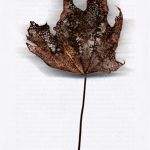
A New Leaf Series – Hope
[Liz Lee]
Categories: [2D & Wall-Hung] -
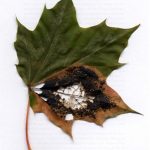
A New Leaf – Guilt
[Liz Lee]
Categories: [2D & Wall-Hung] -
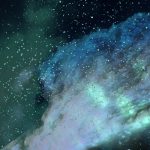
Bloodline 1.0
[Christian Kerrigan]
Categories: [2D & Wall-Hung] -
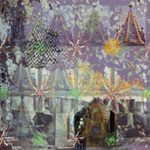
Caves & Flickers
[Leslie Nobler]
Categories: [2D & Wall-Hung] -
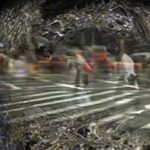
City.Flow(crosswalk)
[Wobbe F. Koning]
Categories: [2D & Wall-Hung] -
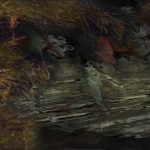
City.Flow(still.4)
[Wobbe F. Koning]
Categories: [2D & Wall-Hung] -
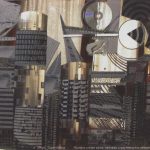
Data Mining
[Ana Z. Ursyn]
Categories: [Animation & Video] -
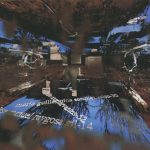
Desert Views, Desert Deaths
[Johnie Hugh Horn] [Lucy Petrovich]
Categories: [Installation] -
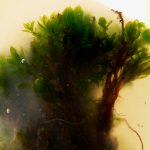
Encased Nature
[Christian Kerrigan]
Categories: [2D & Wall-Hung] -
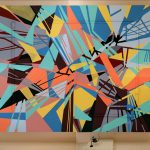
Field Test (Golden)
[Molly Dilworth]
Categories: [2D & Wall-Hung] [Internet Art] -

Field Test (NYC)
[Molly Dilworth]
Categories: [2D & Wall-Hung] [Internet Art] -
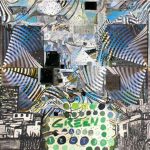
Green Architecture
[Ana Z. Ursyn]
Categories: [2D & Wall-Hung] -

Looking at Clouds, Variation 2
[Edward Johnston]
Categories: [2D & Wall-Hung] [3D & Sculpture] -

Looking at Trees, Variation 2
[Edward Johnston]
Categories: [2D & Wall-Hung] [3D & Sculpture] -
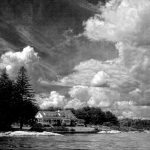
Meridiem
[Martha Jane Bradford]
Categories: [2D & Wall-Hung] -
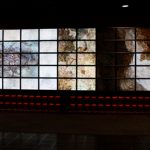
Oxygen
[Francesca Samsel]
Categories: [Animation & Video] -
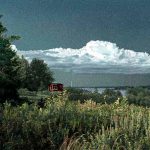
Quarry Hill Afternoon
[Martha Jane Bradford]
Categories: [2D & Wall-Hung] -
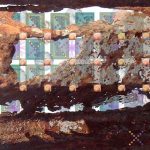
Rusty Tear
[Leslie Nobler]
Categories: [2D & Wall-Hung] -

The Nature of Things
[Cynthia Decker]
Categories: [2D & Wall-Hung] [3D & Sculpture] -
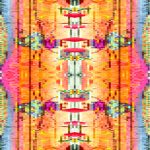
Tokio (from The Politics of the Divine: ...
[Nu’a Bön]
Categories: [2D & Wall-Hung] -
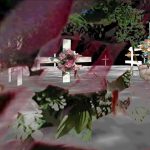
Under control / In control
[Lucy Petrovich]
Categories: [Interactive & Monitor-Based] -
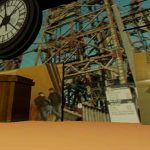
Under the Clock: Big Clock
[Annette Weintraub]
Categories: [2D & Wall-Hung] [Interactive & Monitor-Based] -
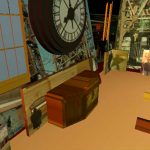
Under the Clock: Kiosk
[Annette Weintraub]
Categories: [2D & Wall-Hung] -
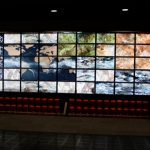
Vapor
[Francesca Samsel]
Categories: [Animation & Video] -
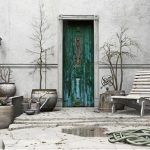
Winter Garden
[Cynthia Decker]
Categories: [2D & Wall-Hung] [3D & Sculpture] -

Zintun-Sun Moon Lake (from The Politics ...
[Nu’a Bön]
Categories: [2D & Wall-Hung]




